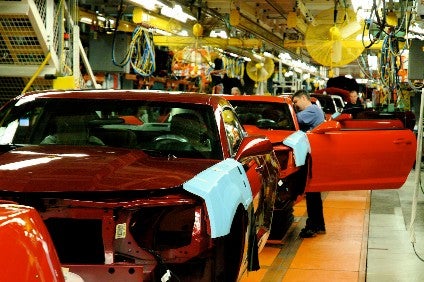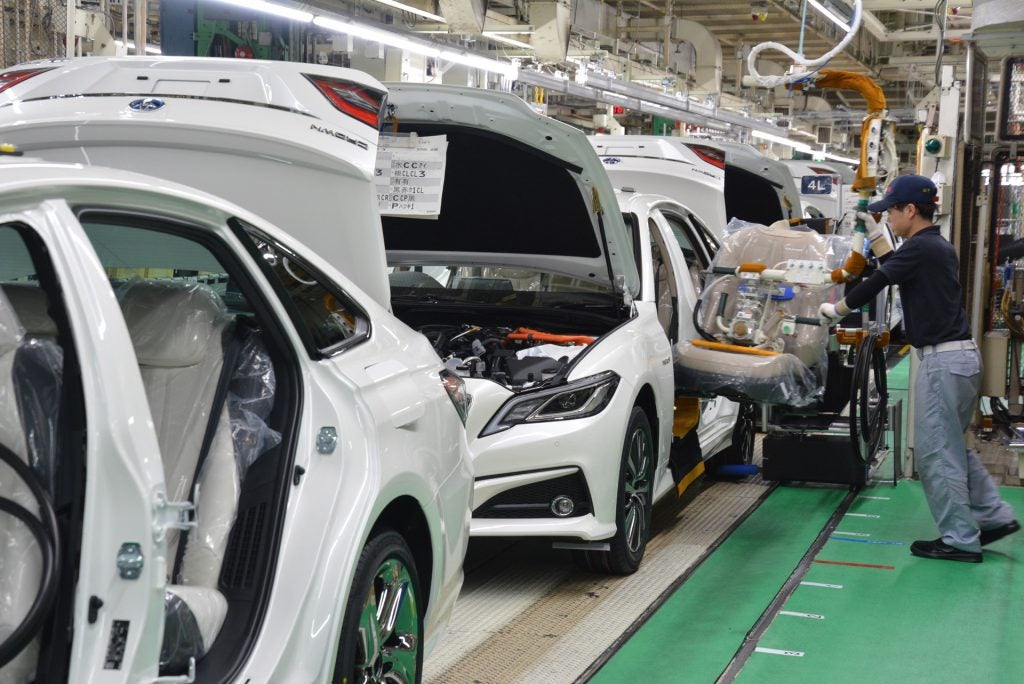
General Motors has confirmed earlier reports it will close its Oshawa assembly plant in Ontario, Canada, two further plants in the US plus two powertrain factories in the US.
The drastic cuts are part of yet another restructuring that the automaker said would save it about US$6bn a year by the end of 2020.
A GM statement talked of “transforming the global enterprise to advance the company’s vision of zero crashes, zero emissions, zero congestion” and “taking cost actions and optimising capital expenditures” to achieve that $6bn annual saving.
The five North American plants on the chopping block (“unallocated in 2019” in GM-speak) are:
- Oshawa Assembly in Oshawa, Ontario, Canada
- Detroit-Hamtramck Assembly in Detroit
- Lordstown Assembly in Warren, Ohio
The two powertrain (“propulsion”) plants are:
- Baltimore Operations in White Marsh, Maryland
- Warren Transmission Operations in Warren, Michigan
It doesn’t end there.
The automaker said: “In addition to the previously announced closure of the assembly plant in Gunsan, Korea, GM will cease the operations of two additional plants outside North America by the end of 2019.”
Cost reductions of $4.5bn and a lower capital expenditure annual run rate of almost $1.5bn will contribute to the cash savings of $6bn.
To achieve that the automaker will:
- Transform product development by evolving global product development workforce and processes to boost the engineering of advanced technology, improving quality and time to market. Resources allocated to electric and autonomous vehicle programmes will double in the next two years
Additional actions include:
- Increasing high-quality component sharing across the model line, especially those not visible and perceptible to customers
- Expanding virtual tool use to lower development time and costs
- Integrating vehicle and propulsion engineering teams
- Compressing global product development campuses
GM said it would optimise its product line having recently invested in newer, highly efficient vehicle architectures, especially in trucks, crossovers and SUVs. It now intends to prioritise future vehicle investments on its next-generation battery-electric architectures.
As the current vehicle line is rationalised, GM expects over 75% of its global sales volume will come from five vehicle architectures by early next decade.
To increase capacity utilisation, GM has in the last four years refocused capital and resources to support growth of crossovers, SUVs and trucks, adding shifts and spending $6.6bn on US plants that have created or maintained 17,600 jobs.
Explaining the plant cull, the automaker said: “With changing customer preferences in the US and in response to market-related volume declines in cars, future products will be allocated to fewer plants next year.”
The changes are expected to significantly increase capacity utilisation and GM will continue working to reduce other manufacturing costs, boost productivity and improve competitiveness of wages and benefits.
Salaried and salaried contract staff will be reduced by 15% including 25% fewer executives to streamline decision making.
“The actions we are taking today continue our transformation to be highly agile, resilient and profitable, while giving us the flexibility to invest in the future,” said GM chairman and CEO Mary Barra.
“We recognise the need to stay in front of changing market conditions and customer preferences to position our company for long-term success.
“These actions will increase the long-term profit and cash generation potential of the company and improve resilience through the cycle.”
GM expects to fund the restructuring costs through a new credit facility.
The automaker expects to book pre-tax charges of $3.0bn to $3.8bn for the restructuring. Most will be charged in the fourth quarter of 2018 and first quarter of 2019 with some additional costs throughout the rest of 2019.
Michelle Krebs, executive analyst, Autotrader, said: “In contrast to times past, General Motors, under CEO Mary Barra, is trying to get ahead of a potential crisis by making cuts now. A confluence of factors has triggered GM’s actions: a downturn in the important China market as well as a potential downturn in the North American market – the two are GM’s biggest markets; the dramatic shift by consumers from traditional cars to utility vehicles; and the impact of tariffs and trade issues.
“GM is actually a tad late to adjusting its product line and production capacity to the dramatic car to utility shift. Ford and Fiat Chrysler already revealed their plans to largely abandon traditional cars. We had expected GM to follow suit, especially in light of 2019’s labour talks with the UAW.”
Kelley Blue Book executive analyst,Rebecca Lindland, said: “Barra is pushing GM into the 21st century by proactively up-ending nearly every part of the US business and its global operations, positioning the company to be more flexible, agile, and streamlined.
“But it comes at a tremendous cost to people and the communities which depend upon GM plants for economic sustainability. While this may be a market necessity, I am concerned about the brain drain: a loss of valuable legacy knowledge and experience as long-term GM employees are let go.”
Earlier report: GM to close Oshawa assembly plant in Canada







